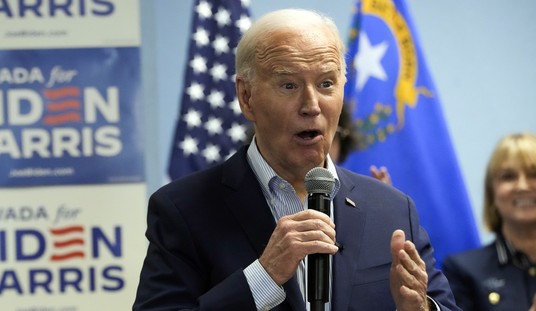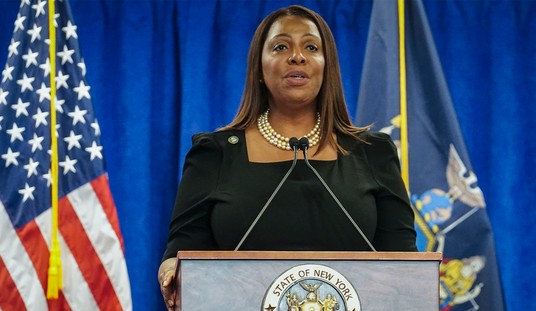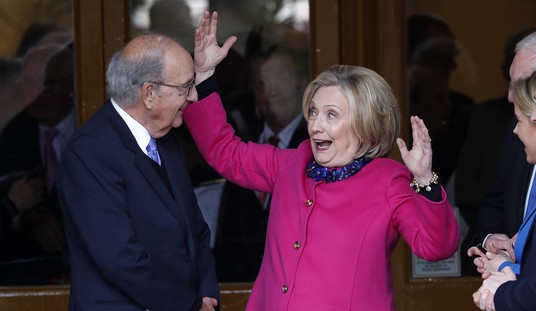
FBI Director James Comey pauses while making a statement at FBI Headquarters in Washington, Tuesday, July 5, 2016. Comey said the FBI will not recommend criminal charges in its investigation into Hillary Clinton’s use of a private email server while secretary of state. (AP Photo/Cliff Owen)
In James Comey’s book, A Higher Loyalty, he goes out of his way to defend his decision to exonerate Hillary Clinton. As you know, in May, some two months before Hillary Clinton was interviewed in the company of two of her co-conspirators acting in their alternate role as legal counsel (no, the offices and homes of Cheryl Mills and Heather Samuelson have not been raided), James Comey circulated a draft statement exonerating Hillary Clinton in FBI headquarters. This act, alone, was borderline lawless and highly improper conduct on the part of Comey and, according to Rod Rosenstein, was sufficient to justify Comey’s firing.
The director was wrong to usurp the Attorney General’s authority on July 5, 2016, and announce his conclusion that the case should be closed without prosecution. It is not the function of the Director to make such an announcement. At most, the Director should have said the FBI had completed its investigation and presented its findings to federal prosecutors. The Director now defends his decision by asserting that he believed attorney General Loretta Lynch had a conflict. But the FBI Director is never empowered to supplant federal prosecutors and assume command of the Justice Department. There is a well-established process for other officials to step in when a conflict requires the recusal of the Attorney General. On July 5, however, the Director announced his own conclusions about the nation’s most sensitive criminal investigation, without the authorization of duly appointed Justice Department leaders.
Rosenstein, of course, has now joined the list, roughly the size of the book holdings of the New York City Public Library, of people to whom Comey feels morally superior:
Comey Thinks Rosenstein Is ‘Dishonorable’ https://t.co/WUGv5TekE1 pic.twitter.com/U91dtxr8BT
— Daily Caller (@DailyCaller) April 16, 2018
“Any investigator or prosecutor who doesn’t have a sense, after nearly a year of investigation, where their case is likely headed, is incompetent. Prosecutors routinely begin drafting indictments before an investigation is finished if it looks likely to end up there, and competent ones also begin thinking how to end investigations that seem likely to end without charges,” Comey explained in “A Higher Loyalty,” which hit the shelves Tuesday. “In neither case are minds closed to a different outcome if subsequent evidence dictates, but competent people think ahead.”
…
“Unless we suddenly found a smoking-gun email or directive clearly pointing to Clinton’s intent, or unless she lied to us in an FBI interview, both of which were possibilities, this was the way I expected the case to end,” Comey explained. “In such a poisonous political environment, I knew we needed to think far in advance how best to present our decision.”
Wait, wait, I thought Comey was FBI director, not a prosecutor? But, more to the point, is this even true?
There was more than a smoking gun in Hillary Clinton’s emails. There was a smoking arsenal.
In total, the investigation found 110 emails in 52 email chains containing information that was classified at the time it was sent or received. Eight chains contained top secret information, the highest level of classification, 36 chains contained secret information, and the remaining eight contained confidential information. Most of these emails, however, did not contain markings clearly delineating their status.
You don’t get this volume of classified email on a non-classified system without trying to do it. The Top Secret information has to be deliberately mishandled to move it from a classified to non-classified environment. Some of the classified was clearly marked. And there is documentary evidence that Clinton told an aide to strip classification markings from classified documents and transmit it by non-secure means. And somehow this information also ended up on Anthony Weiner’s computer.
And did he mention lying to the FBI?
Hillary Clinton said she never sent nor received any material marked classified. She did.
She told the FBI she was not aware of how documents were made classified when she was the classification authority for State Department and it was documented that she had been trained on handling classified information.
She told the FBI that she thought the capital letter C at the beginning of paragraphs was alphabetical sequencing. It is the marking for Confidential. Clinton was never asked to explain how multiple paragraphs in the same document were C in a sequence.
She told the FBI she only used one mobile device. Actually, she used at least thirteen, and sometimes was operating two different devices.
She told the FBI she only had one phone number. An aide said she used two phones and the FBI found the second phone number.
This whole story by James Comey is a clearly horsesh** from start to finish. He decided, despite the existing evidence, that Clinton’s political survival trumped, so to speak, the law. Even when she shamelessly (well, she is Hillary Clinton so “shameless” goes without saying) lied, he let it go. Then he usurped the authority of the Attorney General to announce there would be no prosecution when he was not the prosecutor.












Join the conversation as a VIP Member